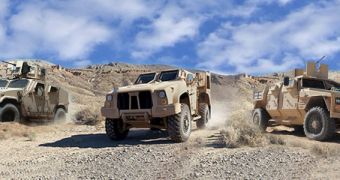A group of investigators in the United States, featuring researchers with the Applied Physics Laboratory (APL) at the Johns Hopkins University (JHU) and the Office of Naval Research (ONR) announce the development of a new additive that allows paint to scar over just like human skin when scratched. This self-healing ability does not allow corrosion to reach the metal underneath the paint.
Experts hope to use these compounds to prevent the need for excessive maintenance on US Navy ships and other assets. For example, the US Marine Corps (USMC) uses land and amphibious vehicles for its operations, all of which are subjected to the corrosive effect of saltwater. Each year, the Navy shells out more than $7 billion (€5 billion) on repairing damage caused by rust.
The innovative additive is called polyfibroblast (PFB). When added into paint, the compound allows any scratches to scar over and eventually heal over time. This process occurs fairly fast, so corrosive agents simply do not have the time to reach the metal parts the paint covers up. Using PFB on a large scale could save the Navy billions every year.
The compound comes as a powder that can be added to any standard paint primers. Each PFB particle is basically a very small polymer sphere that contains a little bit of oily liquids. When a scratch occurs, multiple spheres are broken, releasing their cargo onto the exposed surface. These small oily droplets create a water-repellant coating of a waxy consistency, which does not allow other chemicals through.
“Corrosion costs the Department of the Navy billions of dollars each year. This technology could cut maintenance costs, and, more importantly, it could increase the time vehicles are out in the field with our Marines,” says the manager for logistics research programs at the ONR Expeditionary Maneuver Warfare and Combating Terrorism Department, Marine Captain Frank Furman.
This is not the first time self-healing paints have been developed for a wide variety of applications. However, the APL/ONR powder is the first to be engineered specifically in a manner that allows it to be actually useful for vehicles operating in very dangerous environments. Most other self-healing paints out there are used exclusively for cosmetic purposes.
“We don’t care if it’s pretty. We only care about preventing corrosion,” explains APL senior research scientist Dr. Jason Benkoski, who was the lead researcher on the new PFB project. The powder was able to protect military vehicles for six full weeks in a closed chamber filled with salt fog. This chemical was used to emulate the ocean sprays that batter Navy vehicles during deployments.
“We are still looking into how to make this additive even more effective, but initial results like that are encouraging. Carry that out of the lab and into the inventory, and that translates to improved readiness and big savings,” adds the Deputy Program Manager for Light Tactical Vehicles at ONR, Scott Rideout.

 14 DAY TRIAL //
14 DAY TRIAL //